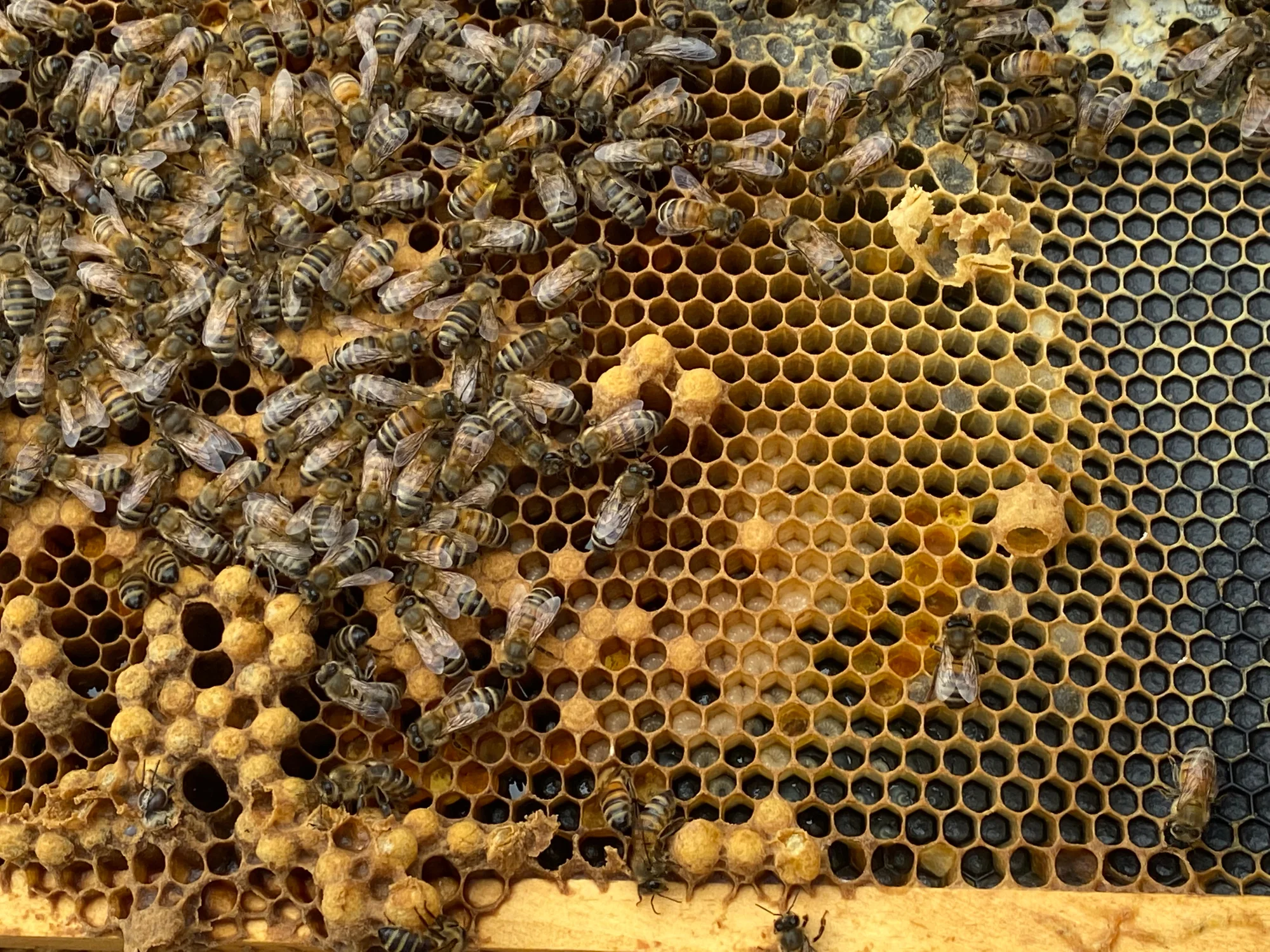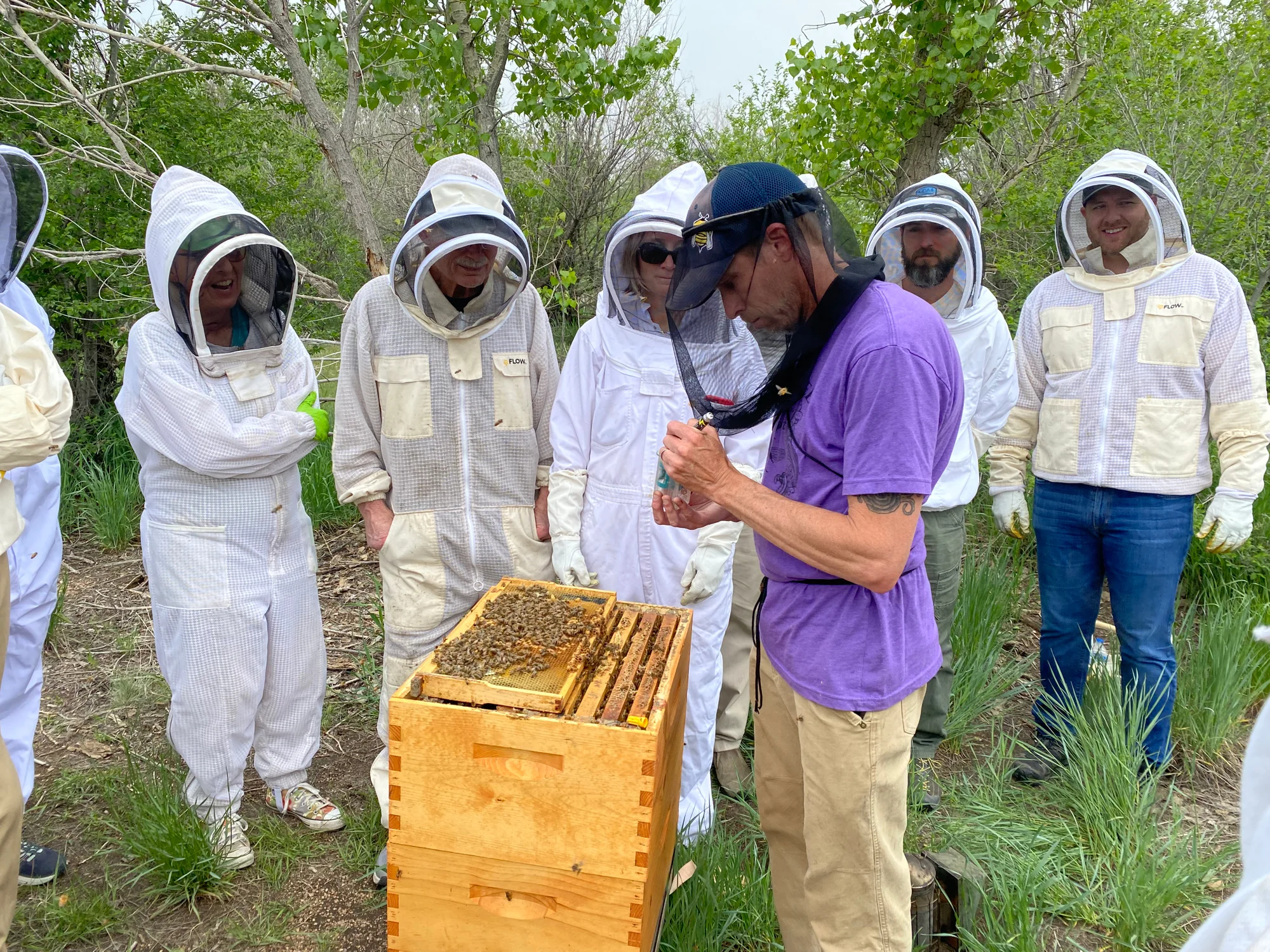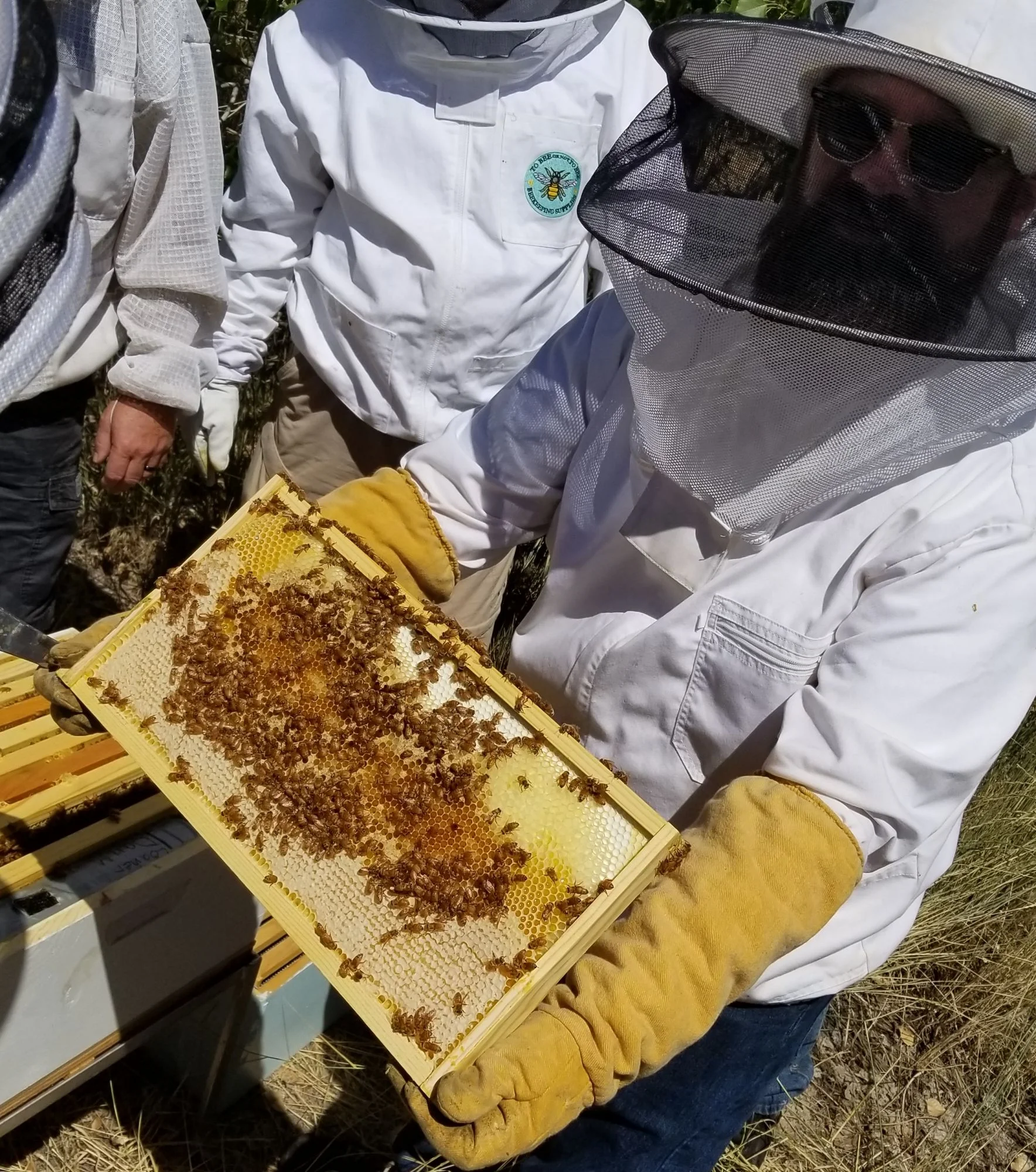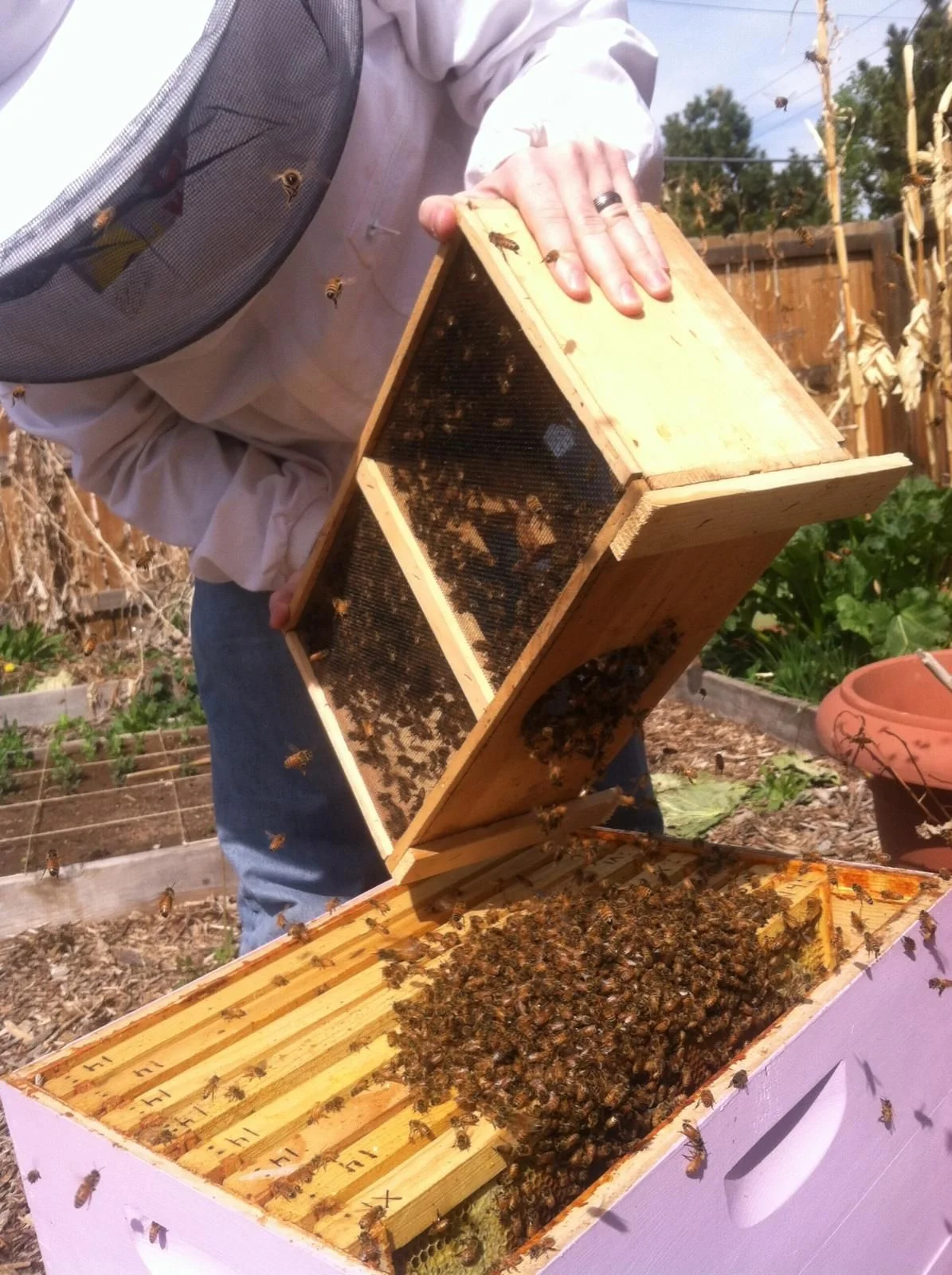Amidst the hustle and bustle of Denver, a small but determined community works tirelessly behind the scenes. These individuals share a hobby that connects them with nature, supports the agricultural industry, and contributes to the environment. Their shared passion? Urban beekeeping in Denver.
Urban Beekeeping in Denver
The typical image of beekeeping – hives surrounded by sprawling fields and swathes of flowers – isn’t what you’ll find here in Denver. “It’s not necessarily like that rural image where you have a big open field that the bees need to hit,” says Bryan Zavada, vice president and eight-year member of Denver’s Mile Hive Bee Club. A full-sized tree in the city can provide the equivalent of an acre of forage, making trees crucial to beekeeping in Denver.
Urban beekeeping revolves around the two substances that the bees need most – pollen and nectar – and the times of the year they are most available. For instance, in Denver, maple trees start providing pollen as early as late February. “That’s really early; I was surprised when I learned that fact,” Zavada says. “Part of what gets the colony going up in the late winter is that early pollen provided by the trees.”

The Mile Hive Bee Club
The Mile Hive Bee Club was founded in 2012 by Gregg McMahon. The Denver group’s main mission is to support and educate Colorado beekeepers about three key areas: the bees’ importance to the ecosystem, the ways they can be incorporated into agriculture and environmentally sustainable beekeeping methods.
At their dedicated teaching apiary and pollinator meadow in Denver’s Riverside Cemetery, the Mile Hive Bee Club holds regular meetings and classes, with a focus on teaching the new club members with the aid of their apiaries.
Zavada, who had been a teacher his entire adult life, was inspired to take up beekeeping after a visiting beekeeper taught his students about the wonders of these pollinating insects. “I learned more in that half an hour about bees than I’d probably known in my entire life,” Zavada says. “So that’s the event that kind of pushed me over the edge that made me decide I wanted to learn more.” Zavada joined the Mile Hive Bee Club so that he could ask veteran beekeepers questions as he got started. “I really enjoyed the social nature of interacting with other beekeepers, hearing about their stories,” he says. “I learned a lot through my experiences as a participant in the club, and at some point when I got experienced enough, I felt it was my mission to start giving back to other new beekeepers.”

Why Protecting Bees is Important
The Mile Hive Bee Club’s promotion of sustainable beekeeping isn’t arbitrary. About a third of the food we consume is pollinated by bees, making the entire food industry dependent on the movement of honey bees from crop to crop. Some beekeepers build an entire business around the pollination industry, trucking their hives to various locations to meet the pollination needs of food growers.
Despite their crucial role in our agricultural system, bee populations remain fragile. You may remember “Colony Collapse Disorder” – a phenomenon in which most worker bees in a colony would disappear, leaving behind the queen, their food, and a handful of nurse bees – from the late 2000s. Zavada suspects that overuse of certain chemical treatments against parasites like the Varroa mite, which had developed resistance, contributed significantly to the bees’ die-off, but the exact cause of CCD has never been confirmed.
While the CCD issue is less prominent now, other challenges persist, including space and resource scarcity. Each county has its own regulations about how many bees are allowed on a property, and some urban dwellers don’t have the property space to house bees. Still, many of these people are interested in supporting the beekeeping community. This has led to collaborative setups where Zavada and others keep their bee colonies on other people’s land.
Urban development in the Denver metropolitan area poses another issue. As city development increases, this inevitably reduces the forage available for bees. “As we put up another shopping mall, or another condo complex, or another drug store on the corner, that just means less and less food out there for bees,” Zavada says.

How to Get Involved
Becoming part of the community of urban beekeeping in Denver requires dedication, and Zavada encourages newcomers to get to know other beekeepers and commit themselves to the learning process. An understanding of the science and art of beekeeping requires hands-on experience. “You can only learn so much from a book, you know,” Zavada says. “You can read that book over and over again but you really get started learning how to become a beekeeper by just getting out there.”
For those interested in helping without actually donning a beekeeper’s uniform, there are still ways to participate. One way is by keeping an eye out for bee swarms and reporting them to the Colorado State Beekeepers Association via the Colorado Swarm Hotline, which sends out local beekeepers to rescue these honey bees, ensuring they find a good home and don’t end up being a nuisance for homeowners. “It’s a service for the bees as well as people because there’s not a very good survival percentage of honeybee colonies that swarm,” Zavada says.
Zavada himself often helps with this swarm dispatch work. “In fact, I got a swarm today. I got a swarm two days ago as well – both in the Denver area,” he says. “That’s one of my favorite things to do, to go out and teach people about honey bee swarms as I go out and rescue them. For me, as a beekeeper and someone who’s built up a business around beekeeping, it’s been tremendously beneficial to go out and be able to catch new bees.”
So what is Zavada’s favorite part about being vice president of the Mile Hive Bee Club? “Teaching,” he says. “Adults, kids, really anyone who wants to learn about bees – people are just so fascinated by it, and I’m fascinated by it too. And I just love sharing that fascination with other people.”
Urban beekeeping in Denver connects individuals with nature, agriculture, the environment, and each other, playing a crucial role in helping bee colonies and preserving our natural environment – one bee at a time.
All images are provided by the Mile Hive Bee Club.





